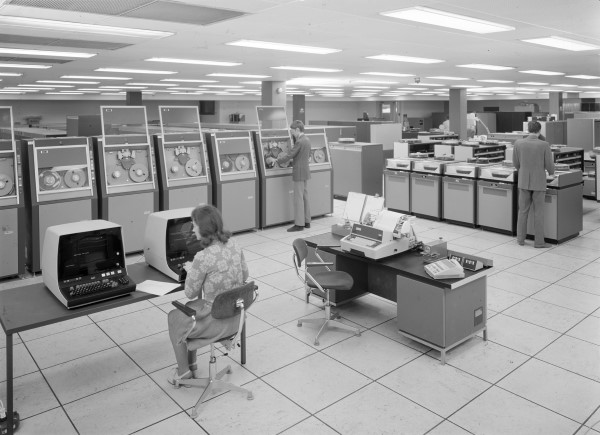The 1970s: Industrivärden starts to become a more active shareholder, focusing on structural measures
Falling productivity and growing international competition require structural change and improved competitiveness. Industrivärden formulates a clear investment strategy with the ambition of exercising its ownership in a more structured way. Numerous, large structural and equity transactions are conducted. The Company begins to build up a holding in Handelsbanken.
In 1971, Ericsson, SCA, Boliden, PLM, AGA and Grängesberg were otherwise the biggest holdings in the portfolio, which the company continued to diversify. New arrivals included mining giant Atlas Copco, automotive manufacturer Volvo, pharma company Astra, and Alfa Laval, which had been in Handion’s portfolio back in 1924.
The early 1970s were marked by great uncertainty about continuing economic performance. Although, for many years, labor costs had increased more in Sweden than in other industrialized countries, they had been counterbalanced by greater productivity. This trend was now reversed. The world economy was also struggling with an oil crisis that caused commodity and fuel prices to rise. This entailed increased Swedish production costs, a weaker ability to compete internationally and thus reduced profitability. Many companies were forced to issue new shares to raise new capital, and Industrivärden strove to participate fully in each share issue. For liquidity reasons, however, it was forced to sell its warrants in AGA, Fagersta and Ericsson.
Industrivärden had reached 16,000 shareholders, but only 200 held more than 1,000 shares. A period of cross ownership between Industrivärden and Beijerinvest now began under the management of financier Anders Wall. Other large shareholders in Industrivärden were insurance companies, pension funds and Investment AB Promotion, the listed company that Industrivärden had created to acquire and develop unlisted family businesses.
On the financial side, Industrivärden broke new ground when it issued the first modern convertible loan in Sweden in 1977.
Despite the crisis years in the 1970s, Industrivärden was able to continue increasing dividends issued every year, a tradition it had had since its start in 1944. This was possible because of its large, differentiated equities portfolio, which distributed the risks, and because of cash flows from its stable, profitable subsidiaries.
What had been a relatively small holding in retail company Åhlén & Holm (now Åhléns) grew during the decade, culminating in Åhléns merging with retail companies NK and Turitz towards the end of the decade. Rune Höglund, who was CEO of both Handelsbanken and Åhléns, and Chairman of the Board of AGA, became CEO of NK/Åhléns in 1977.
In the late 1970s, Industrivärden sold its stock in Fagersta to Kinnevik, marking the end of a long-term holding. This was replaced by a shareholding in Sandvik which was Industrivärden’s sixth largest portfolio holding. The sale was made to give Fagersta a new ownership structure, while Industrivärden came to focus on more processed metal products.
Its focus on the construction, building materials and real estate industries remained. Industrivärden now had three large associates there: John Mattson, Olsson & Rosenlund and Gullfiber. This JIMOR group underwent significant restructuring in the early 1980s, resulting in a clearer division of responsibilities with simpler management according to the distinctive nature of each company. The group’s real estate management operations became stable and profitable and were among the biggest in Sweden.
